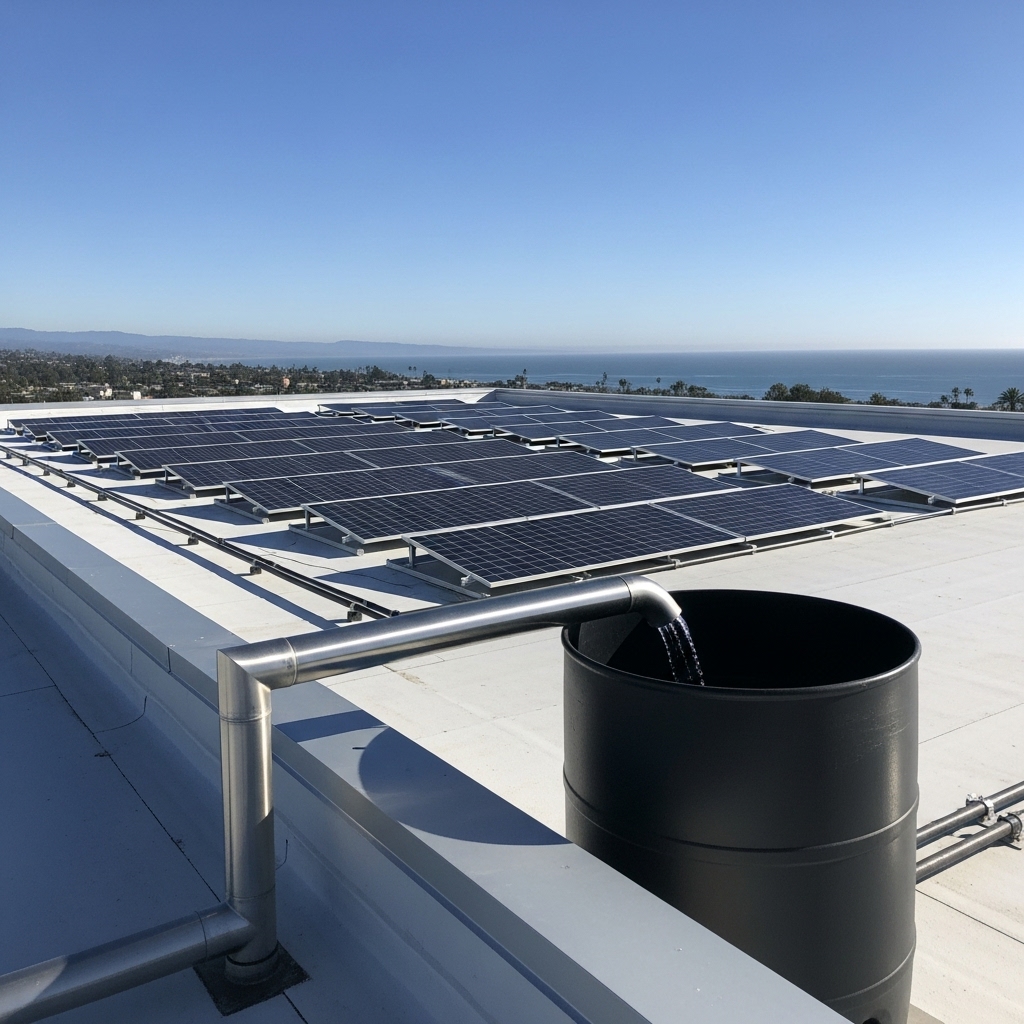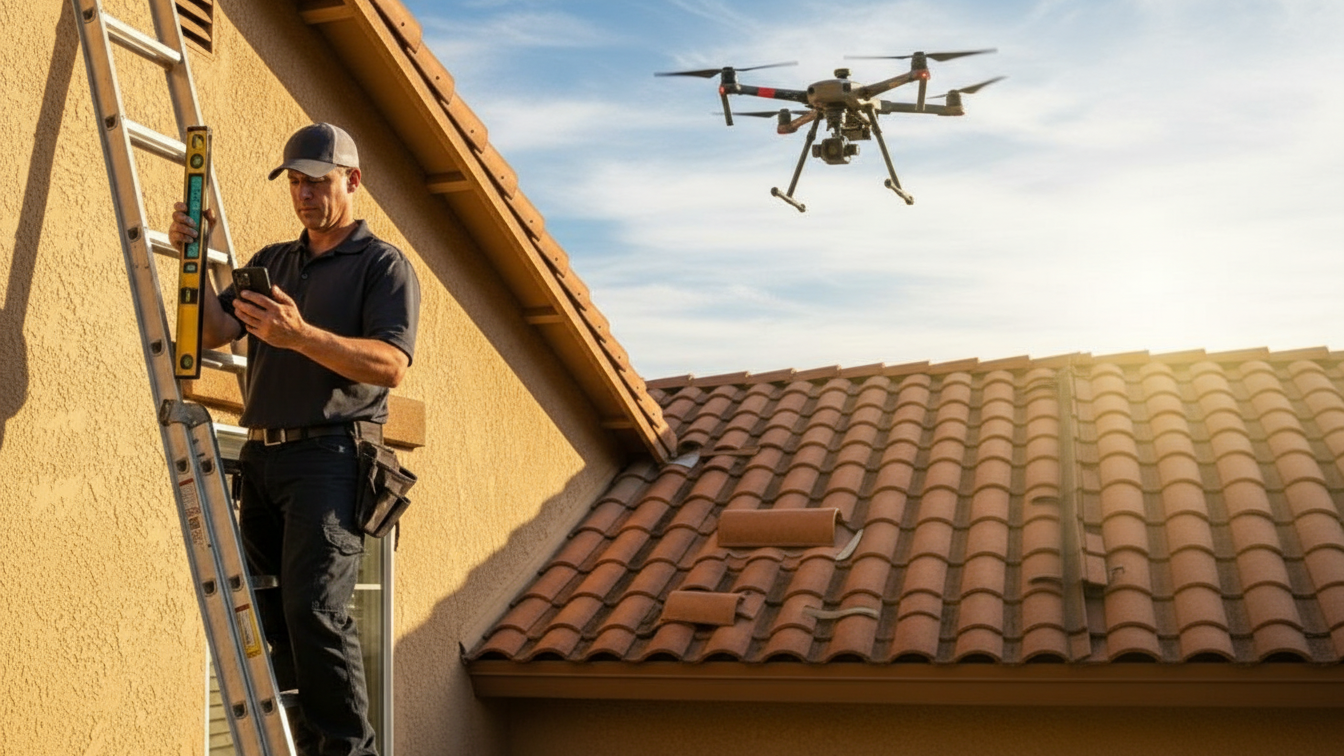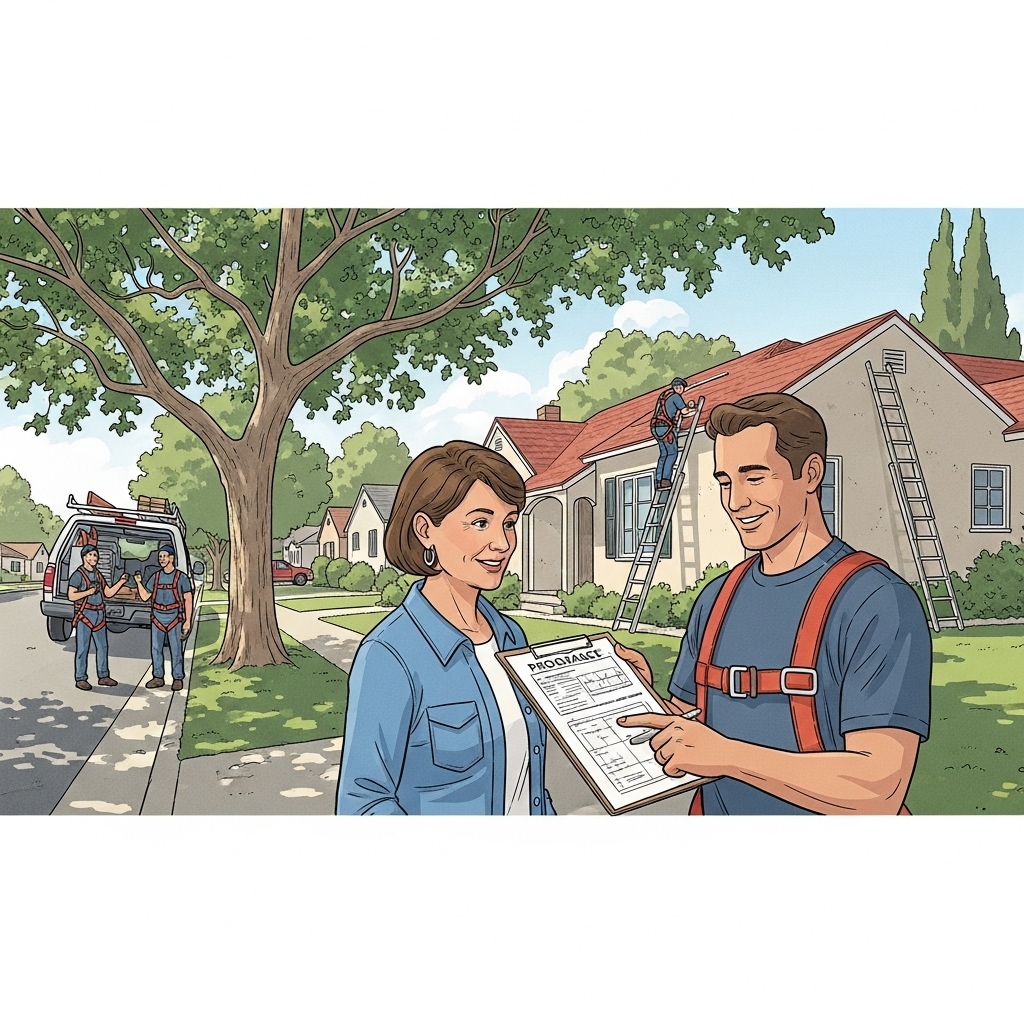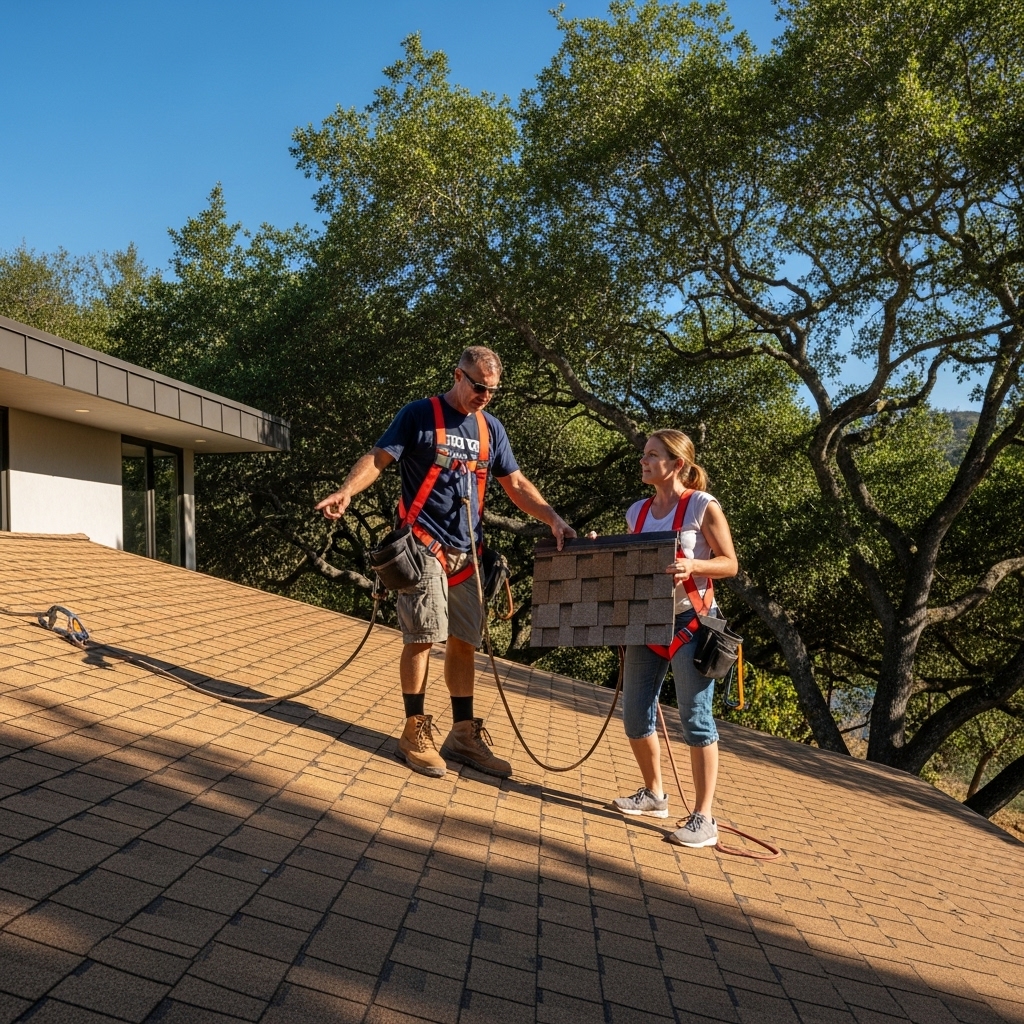In Santa Barbara, the environment is not just a backdrop; it is the foundation of our community’s identity. The coastline, the foothills, the morning marine layer that rolls in like a soft blanket—each reminds us that every building decision is, in some way, an environmental decision. Roofing is no exception. The systems we install over shops on State Street, over tasting rooms in the Funk Zone, and over warehouses in Goleta contribute to energy use, comfort, stormwater behavior, and long-term waste streams. Understanding the environmental impact of your roof equips you to make choices that fit the coast, support your business, and honor the place we all share, starting with informed approaches to commercial roofing.
Environmental impact is often framed as a checklist—recycled content, reflectivity, and a nod to future solar. In Santa Barbara, it is more nuanced. Our mild temperatures hide significant UV exposure, our coastal air brings salt that tests materials, and our occasional storms demand robust drainage. An environmentally sound roof here is one that performs quietly day after day, reducing energy demand, resisting premature failure, and planning for responsible end-of-life handling. That is where real sustainability lives: in durability, thoughtful design, and measured maintenance.
Energy performance and heat management
Cool roof technologies are central to Santa Barbara’s environmental conversation. Reflective membranes and coatings bounce a substantial portion of the sun’s energy back into the sky, reducing heat transfer into the building. The effect is immediate in our climate, where sunny afternoons are common and HVAC systems can run constantly in poorly insulated buildings. By stabilizing interior temperatures, reflective roofs lower energy consumption and moderate peak loads—benefits that ripple through the grid during hot spells.
Insulation complements reflectivity. Adequate insulation reduces heat flow in both directions, minimizing energy spent on cooling during warm afternoons and on heating during our cooler, damp mornings. When reroofing, combining improved insulation with a high-quality reflective surface yields outsized environmental benefits because the building runs more efficiently day in and day out.
Durability as sustainability
The greenest roof is often the one that does not need to be replaced prematurely. In a coastal environment, durability is environmental stewardship. Materials that resist UV degradation, coatings that hold up to salt and moisture, and details that shed water efficiently all extend service life. Each additional year of dependable performance defers manufacturing, transportation, and disposal impacts associated with replacement.
Durability is not just material choice; it is detailing. Reinforced corners, robust edge metal, proper fasteners, and smooth drainage paths reduce the likelihood of early failure. An environmentally minded spec considers these realities because a system that is strong in the right places consumes fewer resources over its lifetime.
Stormwater and water quality
Roofs influence how rainfall moves through our urban environment. A well-designed commercial roof in Santa Barbara not only keeps the interior dry; it also manages water responsibly. Clean, unobstructed drains prevent ponding that can concentrate contaminants. Scuppers and gutters sized for periodic heavy rains direct water efficiently to downspouts and approved discharge points. Where feasible, on-site solutions like cisterns and infiltration areas turn a storm into a resource rather than a nuisance.
Maintenance plays a role in water quality. Keeping roofs free of debris, grease residue near kitchen exhausts, and loose ballast or metal fragments reduces the pollutants that can wash into storm drains. Simple routines—quarterly cleaning and pre‑rainy season checks—are environmental actions because they protect local waterways and lessen the load on municipal systems during downpours.
Material choices and embodied impact
Every product has a backstory: raw materials, manufacturing energy, and transportation to the jobsite. Considering embodied impact means balancing durability, performance, and end-of-life options. Some single-ply membranes offer recycling programs; metal components can often be recycled if separated properly; and insulation choices may include recycled content. The key is to pair these attributes with coastal performance so you do not trade a small upfront environmental benefit for a shorter lifespan and earlier replacement.
Adhesives, sealants, and coatings matter, too. Low‑VOC options reduce emissions during installation and maintenance, supporting indoor air quality for tenants and crews. In a city that values outdoor living, minimizing odors and off‑gassing during projects is both a neighborly and environmentally considerate choice.
Roof-integrated renewables and readiness
Solar and roofing are natural partners in Santa Barbara. The sun gives us abundant energy, and a roof designed for solar performs better for longer. Planning for panel placement, penetrations, and wire management eliminates rework and avoids penetrations being added ad hoc later. Structurally, confirming loads and attachment methods ahead of time supports both performance and safety, while carefully detailed flashings protect the roof’s integrity.
Whether solar is installed today or years from now, roof readiness is an environmental decision. It makes the eventual project cleaner—fewer penetrations and stronger sealing—and preserves the roof’s service life by avoiding unnecessary disturbances. The same logic applies to HVAC upgrades and telecom infrastructure: coordinated design keeps the roof healthy and efficient.
Local climate realities: salt, sun, and wind
It is easy to talk about sustainability in abstract terms, but the environment tests our decisions in concrete ways. Salt accelerates corrosion of inadequately protected metals, leading to replacements that carry environmental costs. UV exposure embrittles some materials, resulting in more frequent repairs or early replacement. Sundowner winds expose edges and corners, where failures can translate to service calls and emergency patching. An environmentally friendly roof is one that anticipates these stresses, not just one that earns points on a checklist.
Strategies like isolating dissimilar metals, selecting corrosion-resistant fasteners, reinforcing perimeters, and maintaining reflective coatings are less glamorous than solar panels but foundational to sustainability. They keep the roof performing, reduce waste, and prevent water intrusion that could damage interior finishes and equipment.
Community aesthetics and urban heat
Santa Barbara’s design sensibilities are part of its environmental character. Cool roof surfaces reduce urban heat, making streets and courtyards more comfortable, while careful edge detailing and mechanical screening keep rooftops visually calm. Even when a roof is not visible from the ground, its reflectivity contributes to a cooler microclimate, particularly in dense commercial zones.
Balancing reflectivity with architecture is achievable. Many modern membranes and coatings deliver high solar reflectance in tones that harmonize with surrounding buildings. The result is a roof that works for the environment and for the community’s aesthetic expectations.
Operations, tenants, and wellbeing
Environmental performance shows up inside the building as well. A roof that limits heat gain supports even temperatures and calmer HVAC cycles, improving occupant comfort. Less mechanical strain means fewer maintenance visits, less noise, and a smaller operational footprint. In restaurants and retail, where indoor experiences shape revenue, the environmental and human benefits overlap in very practical ways.
Healthy roofs also protect indoor air quality by preventing moisture intrusion that can support mold or degrade finishes. Maintaining a tight, dry envelope is a sustainability action because it preserves materials and avoids premature interior replacements that carry their own environmental costs.
End-of-life planning and waste reduction
Eventually, every roof reaches the end of its useful service. Planning for that moment is part of an environmental strategy. Choosing systems that can be overlaid rather than torn off, when structurally and legally appropriate, reduces waste. Separating recyclable metals during tear-off keeps material out of landfills. Working with contractors who coordinate disposal thoughtfully reduces transportation impacts and ensures materials go to the right destinations.
Documenting materials throughout the roof’s life—what was installed, where, and when—pays off at the end. It helps crews sort and handle components responsibly and speeds project closeout so the building returns to normal operations quickly.
Putting it all together
The environmental profile of a roof is the sum of many small decisions. It is the choice to clean drains in October, to reinforce an edge before the windy season, to select a reflective membrane that will hold up to UV and salt, and to design with future solar in mind. Each decision may seem minor in isolation, but together they shape performance, comfort, and resource use over decades. In Santa Barbara, where we live with the ocean at our doorstep and the mountains at our back, these choices carry extra meaning.
Working with local professionals who understand coastal conditions keeps your environmental intentions grounded in practical realities. They have stood on these roofs in the fog and in the bright afternoon sun. They know which details matter most, how to coordinate with other trades, and how to navigate codes that influence reflectivity and insulation. Partnering with experienced providers of commercial roofing ensures that sustainability is not a slogan but a set of actions that protect your building and the community we share.
FAQ
Q: Are cool roofs really effective in Santa Barbara’s mild climate? A: Yes. Reflective surfaces reduce heat gain on sunny days, easing HVAC loads and contributing to a cooler urban microclimate, especially in dense commercial areas.
Q: Do sustainable materials cost more to maintain? A: Not necessarily. Durable, well-chosen systems often reduce maintenance because they resist UV, salt, and wind better. The key is matching materials to coastal conditions and maintaining them with simple routines.
Q: Can my existing roof be made more sustainable without a full replacement? A: Often, yes. Cleaning, selective repairs, reflective coatings, drainage improvements, and walk pads are incremental steps that improve performance and extend service life.
Q: How does rooftop solar affect my roof’s environmental profile? A: Solar reduces operational emissions, but it must be integrated thoughtfully. Proper planning of penetrations and load paths preserves roof health and prevents future rework.
Q: What about green roofs or vegetation? A: While less common on low-slope commercial roofs here, they can offer benefits where structure and maintenance allow. More broadly, reflective and durable systems tend to deliver strong returns in our climate.
Q: How should I handle end-of-life roofing materials? A: Work with contractors who separate recyclables, consider overlays when appropriate, and coordinate disposal to minimize transport and landfill use. Documentation from day one makes this easier.
Q: Are there local regulations I should know about? A: Title 24 reflectivity and insulation standards influence reroof projects. Early coordination ensures that environmental goals and code requirements align without surprises.
If you are ready to turn environmental goals into everyday performance, start with your roof. A thoughtful plan will lower energy use, protect interiors, and reduce waste over time. When it is time to evaluate options and build a roadmap that fits Santa Barbara’s coastal realities, connect with trusted experts in commercial roofing who can help you design, maintain, and improve with the environment in mind.






